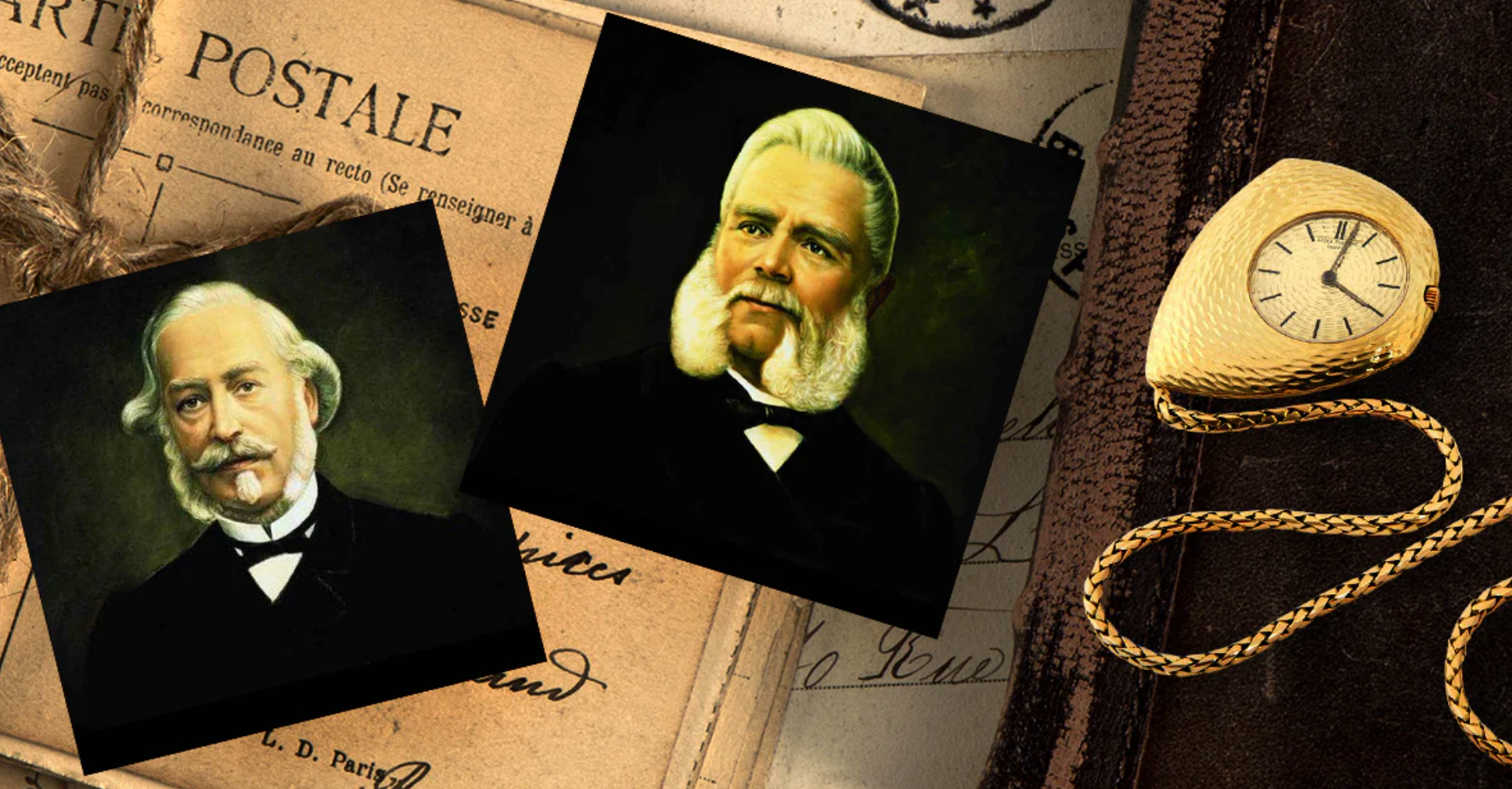

In their hometown of Le Brassus, two young and ambitious watchmakers named Jules Louis Audemars and Edward Auguste Piguet opened a workshop. At a time when serial production was looming due to the growth of industrialization, they set out to create one-of-a-kind complex mechanisms by hand because they believed in the network of artisanship in the Vallée de Joux and did so out of a strong sense of conviction.

1899. Audemars and Piguet unveiled a masterpiece called "A Grand Complication," a pocket watch with a perpetual calendar, deadbeat seconds, jumping seconds (indicating fractions of a second), and a split-seconds hand. It also has a minute repeater that chimes on three gongs, an alarm that sounds on its own gongs, and a minute repeater that chimes on three gongs. One of the most intricate watches ever made, this pocket watch is a marvel. Its movement, which has 1,168 pieces and 21 functions, took them four years to restore.

1913. A sketch of a brooch watch. The aesthetics of the watch were jointly developed by Audemars Piguet and Tiffany.

Things changed for the company when both founders passed away in the span of one year, from 1918 to 1919. However, Paul Louis Audemars and Paul Edward Piguet, the founders' sons, continued to run the company successfully. Together, they carried out the family history of innovation by developing the first skeletonized pocket watch in 1934, the thinnest wristwatch in 1946, and the thinnest pocket watch caliber in 1925.

In 1957, the first Audemars Piguet timepiece with a perpetual calendar was introduced. The manufacturer also retains the record for the first thinnest self-winding automatic caliber with a central rotor that was 2.45 millimeters in thickness, which was introduced in 1967.

Produced circa 1970, 44mm, 18K yellow gold with diamond and sapphire set bezel. Cal. 5020 manual-winding calibre, 20 jewels. Skeleton dial.

1986 - Audemars Piguet: First self-winding ultra-thin tourbillon wristwatch

The Manufacture adds a split-seconds chronograph to its Triple Complication launched in 1992, thus giving rise to the first "Grande Complication" self-winding wristwatch (calibre 2885).
2002. Gérald Genta and the Royal Oak. Photomontage realised for the occasion of the Royal Oak's 30th anniversary, accompanied by the designer's autograph: "You, my Royal Oak, the masterpiece of my career, produced by the Le Brassus artisans, are the magical realisation of my childhood dream.


2003. The Audemars Piguet-sponsored Team Alinghi took home the trophy for the America's Cup.

2004 - Tradition d'excellence n°4
2005. Audemars Piguet presented the Edward Piguet Moss Agate Tourbillon, the first ever watch with a baseplate in moss agate, a semi-translucent mineral whose fine mottled pattern resembles tendrils.

2009. Opening of the Manufacture des Forges. This new production site in the center of Le Brassus was the first industrial building to meet the standards of the new Swiss Minergie-Eco environmental certification.

2012. A special commemorative series is created in honor of the Royal Oak's 40th anniversary. The most successful Formula One driver in the sport's history, Michael Schumacher, is an ambassador for Audemars Piguet. The Royal Oak Offshore Michael Schumacher is a limited edition, with 1,000 being made in titanium ($42,500), 500 in 18k pink gold ($75,00), and 100 in platinum ($110,000).

The Code 11.59 by Audemars Piguet collection evolves with two new 41 mm tone-on-tone models in 18-carat white and pink gold entirely paved with 1085 brilliant-cut diamonds.

What's so special about Audemars Piguet? They use high-quality materials. Instead of using stainless steel, AP uses black ceramic that is then machine and hand-finished to achieve both polished and satin-brushed surfaces. Additionally, the use of white gold screws shows that they are conscious of the fact that attention to detail is frequently what makes anything elegant and admirable.
One of the most renowned and prosperous watch companies in the world is Audemars Piguet. A fairly large market and a fairly large fan base exist for the AP label. Many pieces from this well-liked watchmaker are regarded as wise investments for the tenacious collector.
Still in the hands of the founding families, Audemars Piguet is endowed with a unique spirit of independence. The founders’ visionary workmanship and uncompromising spirit have infused the brand to this day.





Leave a comment
This site is protected by hCaptcha and the hCaptcha Privacy Policy and Terms of Service apply.